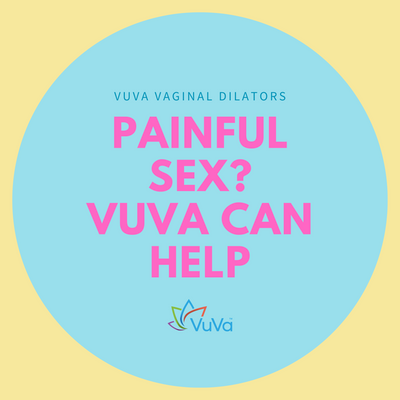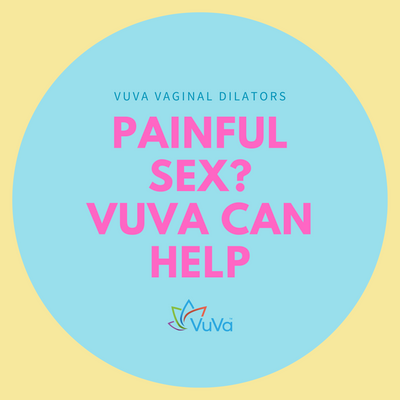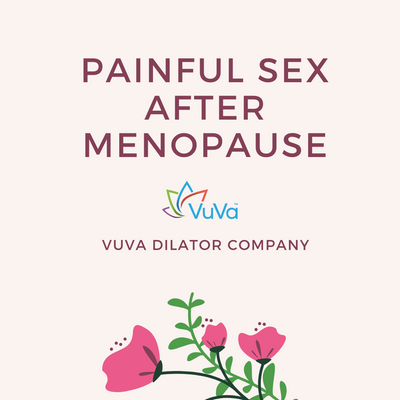
| Tara Langdale
Vaginismus Treatment Options: What Really Works?
Vaginismus is a condition that affects many people with vaginas, yet it is often misunderstood and under-discussed. If you or someone you care about is experiencing pain, anxiety, or difficulty with vaginal penetration—whether during sex, tampon use, or medical exams—you may be searching for answers and, most importantly, hope. The good news is that vaginismus is treatable, and many people go on to lead happy, fulfilling sex lives after treatment. In this comprehensive guide, we’ll explore the most effective treatment options for vaginismus, how they work, and what you can expect on your journey to recovery.
Understanding Vaginismus
Before diving into treatment, it’s important to understand what vaginismus is. Vaginismus is the involuntary tightening or spasm of the muscles around the vagina, which occurs whenever penetration is attempted. This reaction is automatic and can happen even when there is a strong desire for sex or to use tampons. The tightening can make penetration difficult, painful, or impossible. It’s important to remember that vaginismus is not a reflection of desire, arousal, or attraction—it’s a physical response that can be addressed with the right support.
Why Treatment Matters
Living with vaginismus can be distressing. It may affect self-esteem, relationships, and even your willingness to seek medical care. Many people feel isolated or ashamed, but you are not alone. Treatment can help you regain control, reduce pain, and enjoy a more satisfying sex life. Early intervention often leads to better outcomes, but it’s never too late to seek help.
The Multi-Faceted Approach to Vaginismus Treatment
The most effective treatments for vaginismus address both the physical and emotional aspects of the condition. Here’s a detailed look at the options available:
1. Sex Therapy and Counseling
Sex therapy is often a cornerstone of vaginismus treatment. A sex therapist is a mental health professional with specialized training in sexual health and relationships. Here’s how therapy can help:
-
Addressing Anxiety and Fear: Many people with vaginismus have underlying fears about pain, penetration, or negative beliefs about sex. Therapy provides a safe space to explore these feelings and develop healthier attitudes.
-
Processing Trauma: If your vaginismus is linked to past trauma or negative experiences, therapy can help you process these events and reduce their impact on your body’s response.
-
Improving Communication: Therapy can also help couples communicate more openly about sex, intimacy, and expectations, which can reduce pressure and improve outcomes.
-
Individual or Couples Therapy: Therapy may be conducted individually or with a partner, depending on your needs and comfort level.
What to Expect:
Sessions typically focus on education, emotional support, and practical strategies for reducing anxiety related to penetration. Your therapist may guide you through exercises or recommend at-home practices.
2. Pelvic Floor Physical Therapy
Pelvic floor physical therapists are experts in the muscles that support the pelvic organs, including those around the vagina. If you have vaginismus, these muscles may be overly tight or reactive. Physical therapy can help you:
-
Learn About Your Pelvic Floor: Understanding which muscles are involved and how they work is the first step toward regaining control.
-
Practice Relaxation Techniques: Your therapist will teach you how to consciously relax your pelvic floor muscles. Techniques may include deep breathing, visualization, and biofeedback.
-
Manual Therapy: Some therapists use gentle internal or external techniques to help release muscle tension and desensitize the area.
-
Movement and Posture: Improving overall body awareness, posture, and movement patterns can also support pelvic floor relaxation.
What to Expect:
Your first session will likely involve an assessment of your pelvic floor muscles, medical history, and goals. Treatment is always tailored to your comfort level and progresses at your pace.
3. Vaginal Dilators
Vaginal dilators are tube-shaped devices that come in a range of sizes, from small to large. They are used to gradually stretch the vaginal muscles and help your body get used to penetration. Here’s how dilator therapy works:
-
Start Small: You’ll begin with the smallest dilator and, over time, work up to larger sizes as your comfort increases.
-
Guided Practice: Dilators are usually used under the guidance of a healthcare professional, such as a sex therapist or physical therapist.
-
Relaxation and Control: The goal is to practice inserting and removing the dilator while remaining relaxed, helping your muscles learn that penetration does not have to be painful or scary.
-
Partner Involvement: If you have a partner, they can be involved in the process when you’re ready, which can help rebuild intimacy and trust.
Tips for Success:
-
Use plenty of water-based lubricant to reduce discomfort.
-
Practice deep breathing and mindfulness while using the dilator.
-
Go at your own pace—there’s no rush.
-
Celebrate small victories and progress.
4. Relaxation Techniques and Mindfulness
Learning to relax both your mind and body is key to overcoming vaginismus. Anxiety and muscle tension often go hand-in-hand, so addressing both is important. Techniques include:
-
Deep Breathing: Slow, deep breaths can help calm your nervous system and reduce muscle tension.
-
Progressive Muscle Relaxation: This involves tensing and relaxing different muscle groups to increase awareness and control.
-
Visualization: Imagining a safe, comfortable experience can help retrain your body’s response to penetration.
-
Mindfulness: Staying present and non-judgmental can help you notice and release tension as it arises.
These techniques can be practiced alone, with a partner, or as part of therapy.
5. Medical Interventions
While most cases of vaginismus respond well to therapy and physical exercises, some people benefit from medical interventions, especially if other treatments haven’t worked. These may include:
-
Topical Numbing Creams: Applying a topical anesthetic (like lidocaine) to the vaginal area before penetration can reduce pain and anxiety.
-
Lubricants: Using a high-quality, water-based lubricant can make penetration more comfortable, especially if dryness is a concern.
-
Medications: In rare cases, medications such as muscle relaxants or low-dose antidepressants may be prescribed to reduce anxiety or muscle tension.
-
Botox Injections: Research is ongoing, but in some severe cases, botulinum toxin (Botox) injections have been used to temporarily relax the vaginal muscles.
Always discuss these options with a healthcare provider to determine what’s appropriate for your specific situation.
6. Education and Support
Education is an essential part of treatment. Understanding the anatomy of the vagina, the sexual response cycle, and common myths about sex can help reduce fear and empower you to take control of your health. Support groups, online forums, and educational resources can also provide encouragement and reduce feelings of isolation.
7. Involving Your Partner
If you’re in a relationship, involving your partner in treatment can be incredibly helpful. Open communication, patience, and understanding are key. Partners can attend therapy sessions, participate in exercises, and offer emotional support throughout the process. Remember, vaginismus is a medical condition—not anyone’s fault.
What to Expect During Recovery
Recovery from vaginismus is a journey, not a race. Here’s what you can expect:
-
Gradual Progress: Most people start with education and therapy, then move on to physical exercises and dilator therapy. Progress happens at your own pace.
-
Setbacks Are Normal: It’s common to have good days and bad days. Don’t be discouraged by setbacks—focus on your overall progress.
-
Celebrate Milestones: Every step forward, no matter how small, is a victory. Celebrate your achievements and be kind to yourself.
-
Ongoing Support: Even after symptoms improve, ongoing support from a therapist or support group can help maintain progress and address any new challenges.
Frequently Asked Questions About Vaginismus Treatment
Is vaginismus permanent?
No, vaginismus is highly treatable. With the right support and treatment, most people see significant improvement or complete resolution of symptoms.
Can I treat vaginismus on my own?
While some people make progress with self-help resources, working with a healthcare professional (such as a sex therapist or pelvic floor physical therapist) is usually more effective and ensures you have the support you need.
How long does treatment take?
The timeline varies for everyone. Some people see improvement in a few weeks, while others may need several months. Patience and persistence are key.
Will I ever be able to have pain-free sex?
Yes, many people with vaginismus go on to have comfortable, enjoyable sex after treatment. The key is to address both the physical and emotional aspects of the condition.
Taking the First Step
If you think you may have vaginismus, the most important step is to reach out for help. Start by talking to your healthcare provider, who can refer you to specialists in sex therapy or pelvic floor physical therapy. Remember, you are not alone, and there is no shame in seeking support.
Conclusion
Vaginismus can be a challenging and isolating condition, but it is also one of the most treatable sexual health issues. With a combination of therapy, physical exercises, education, and support, you can overcome vaginismus and reclaim your confidence and comfort. Every journey is unique, and every step forward is something to be proud of. If you’re ready to take the first step, reach out to a healthcare provider today—you deserve to live free from pain and fear.
VuVa Magnetic Dilators are specially designed devices that can assist people managing vaginismus by providing gentle, progressive stretching of the vaginal muscles in a safe and controlled way. What sets VuVa dilators apart is their embedded medical-grade magnets, which are intended to promote increased blood flow and help relax the pelvic floor muscles during use. By combining gradual dilation with the potential therapeutic benefits of magnetic fields, VuVa Dilators may help reduce discomfort, decrease muscle tension, and support the body’s natural healing processes. Used regularly as part of a treatment plan—often alongside guidance from a healthcare professional—VuVa Magnetic Dilators can empower individuals to regain comfort and confidence with vaginal penetration.













